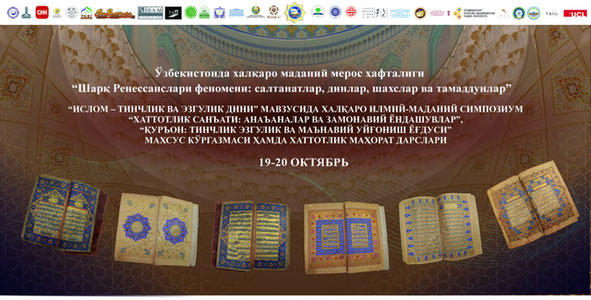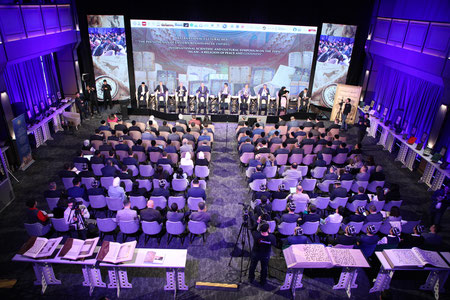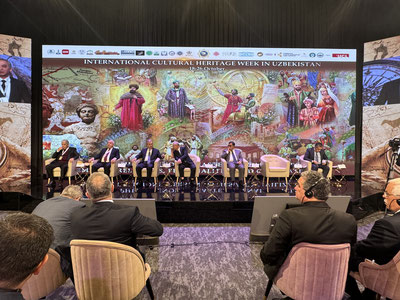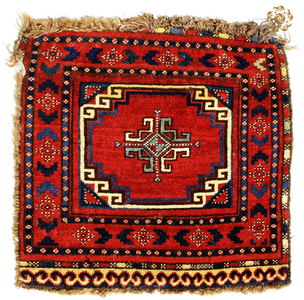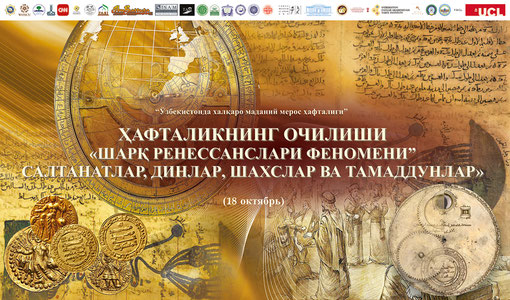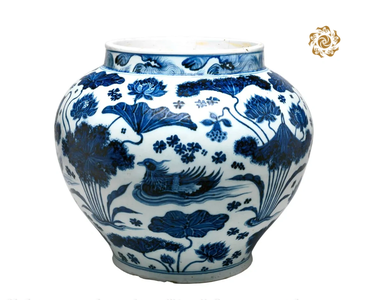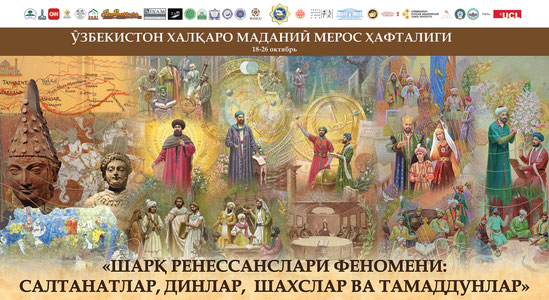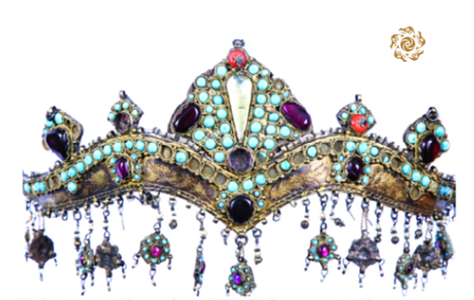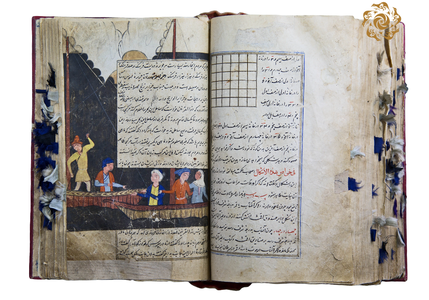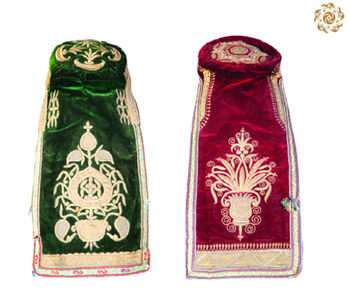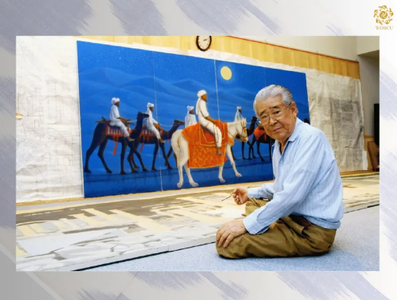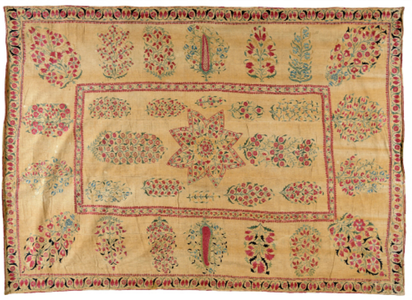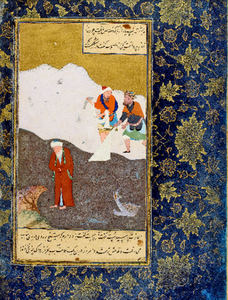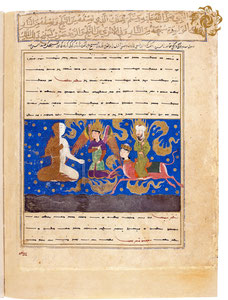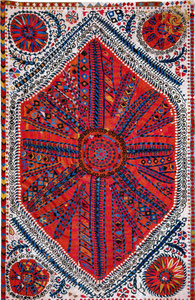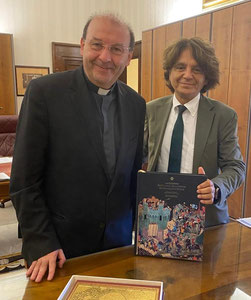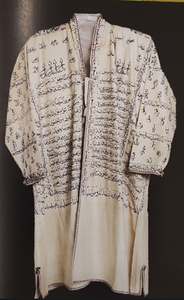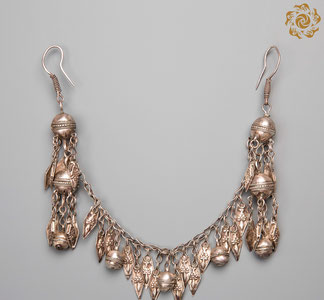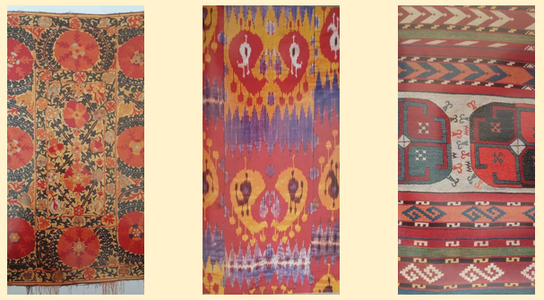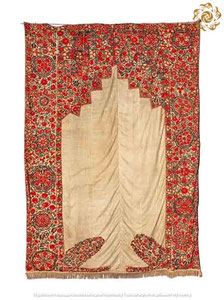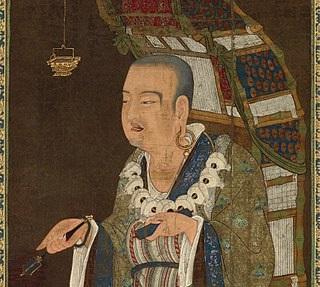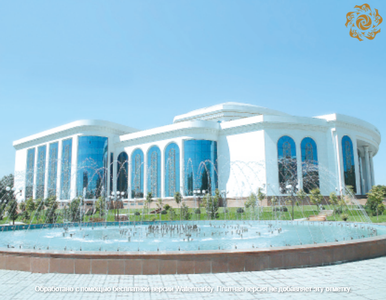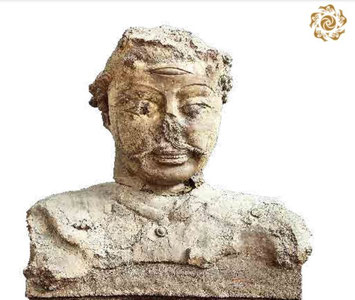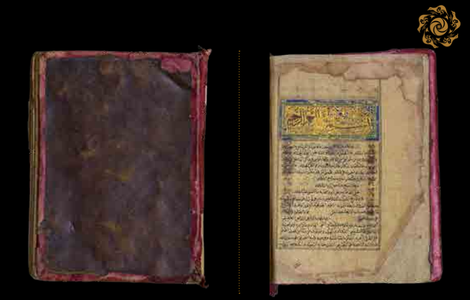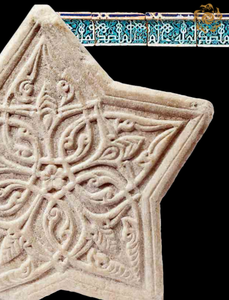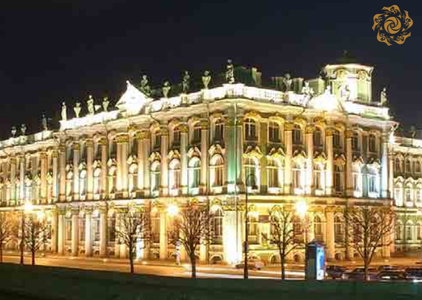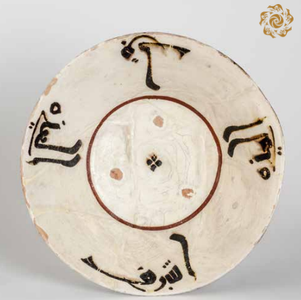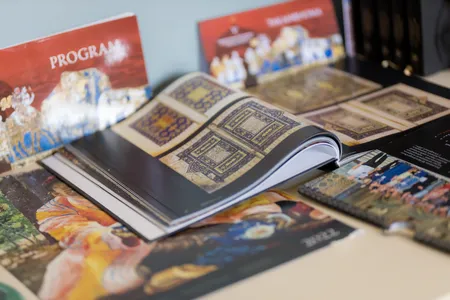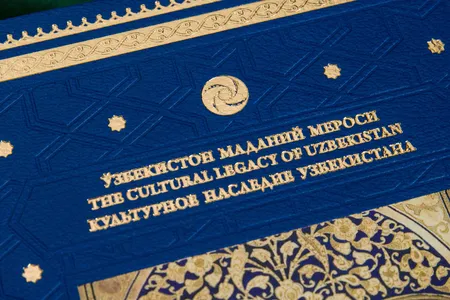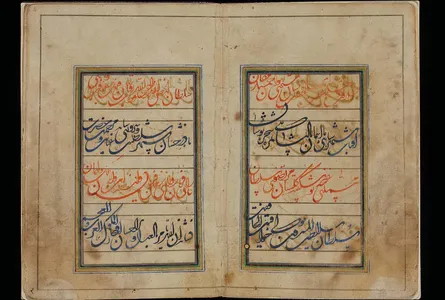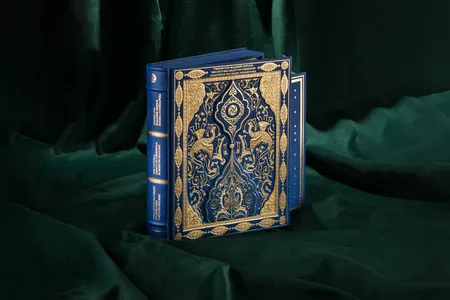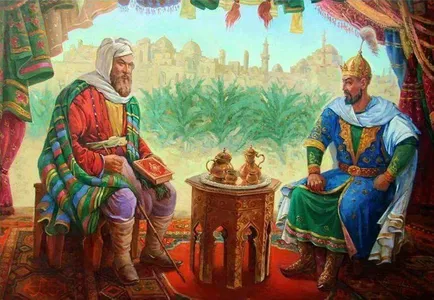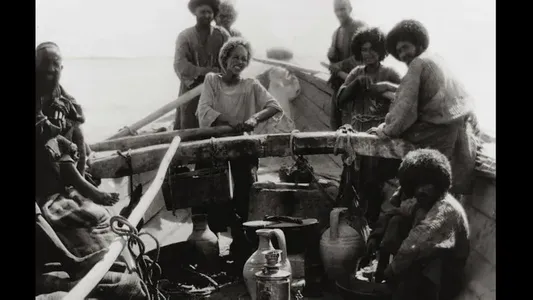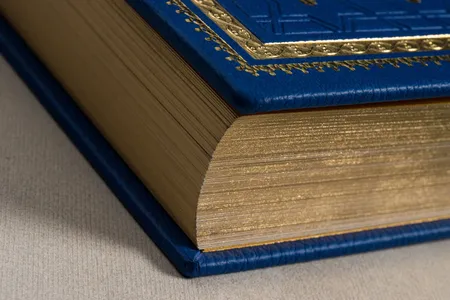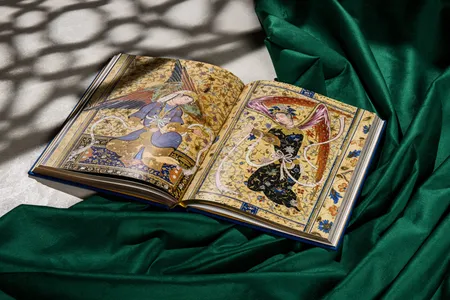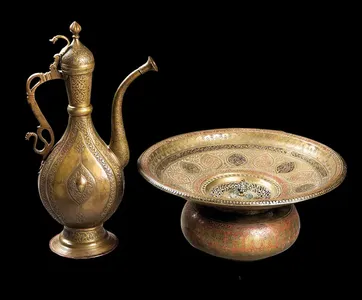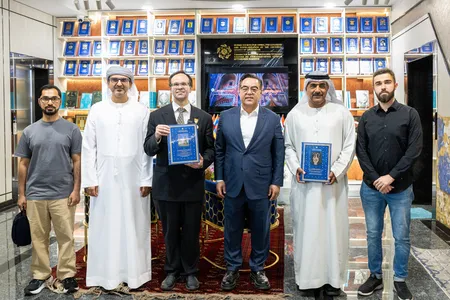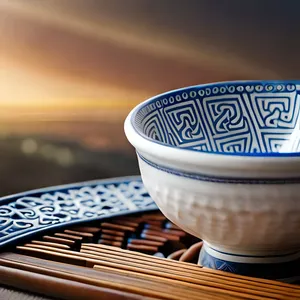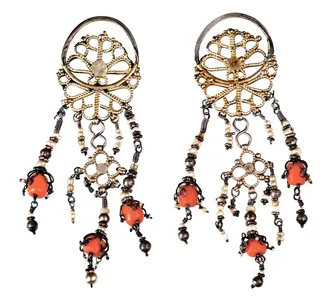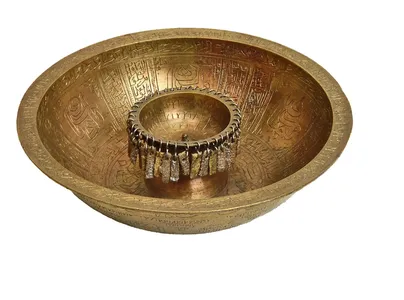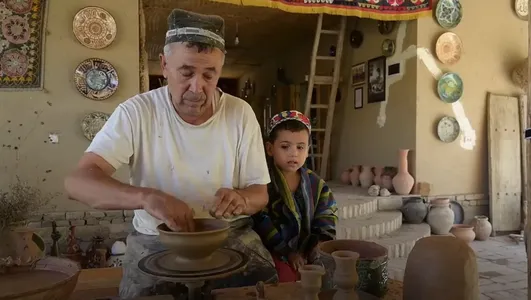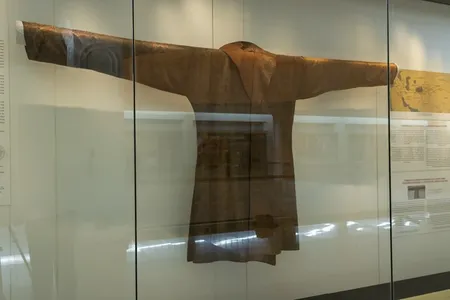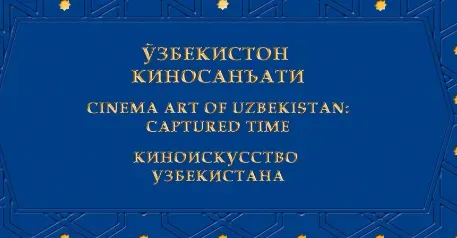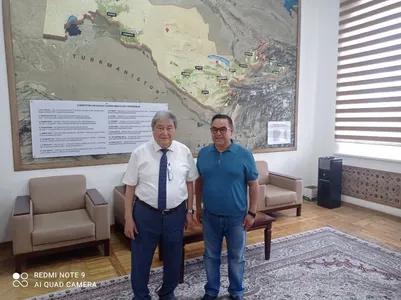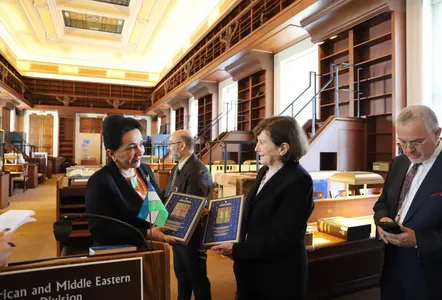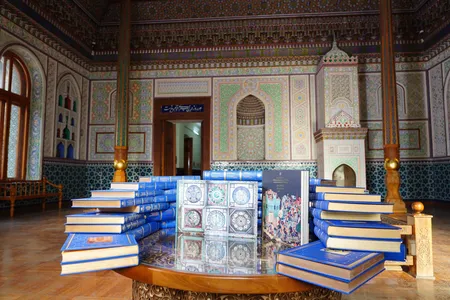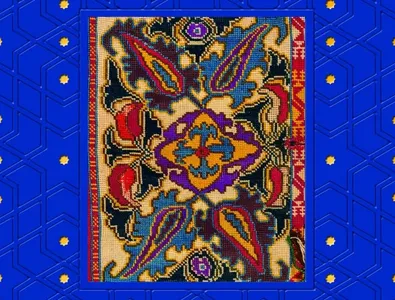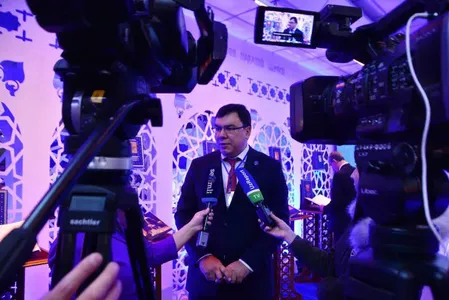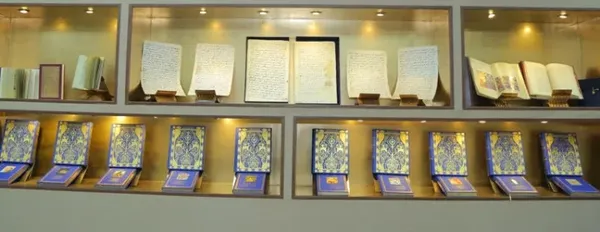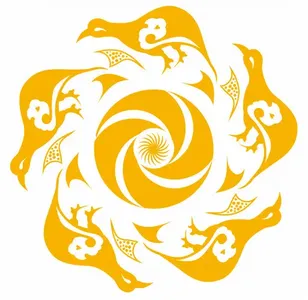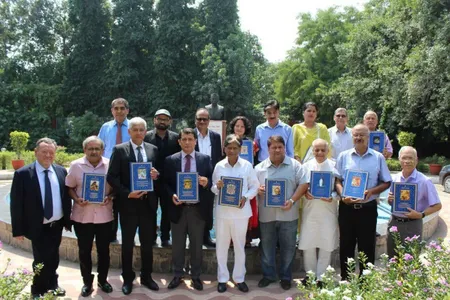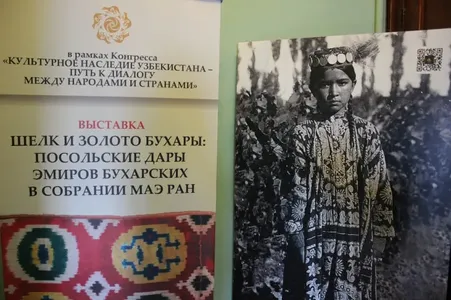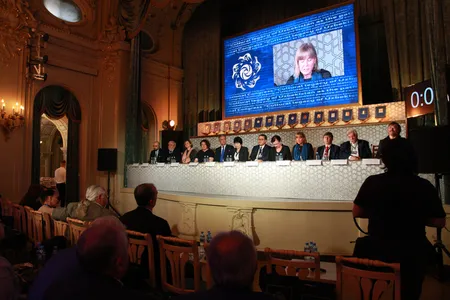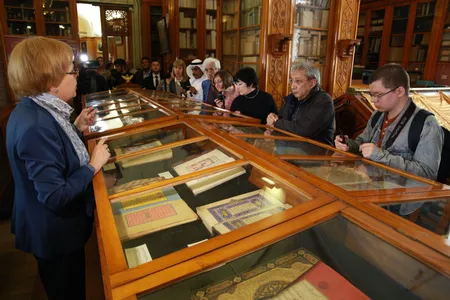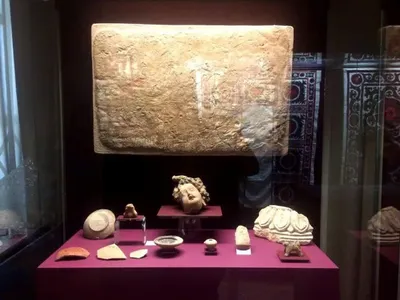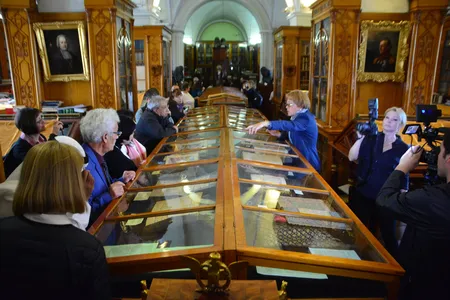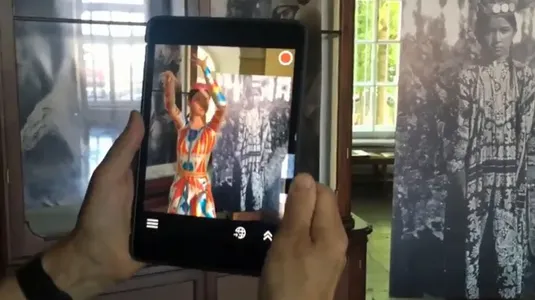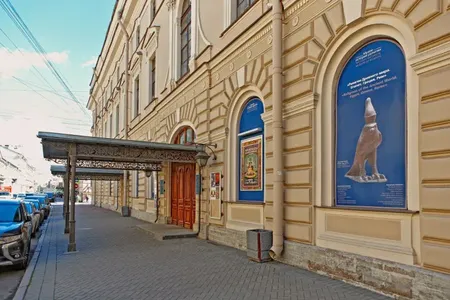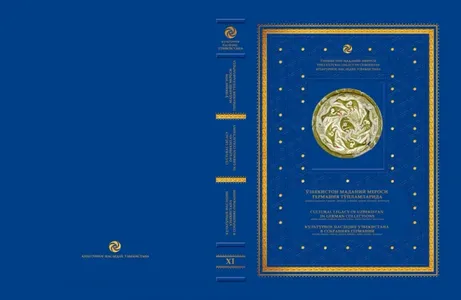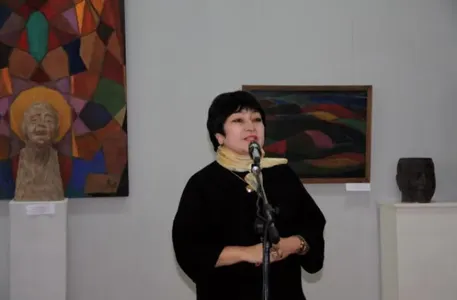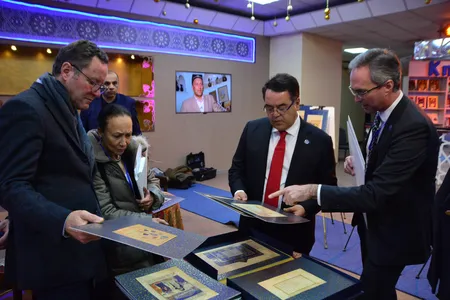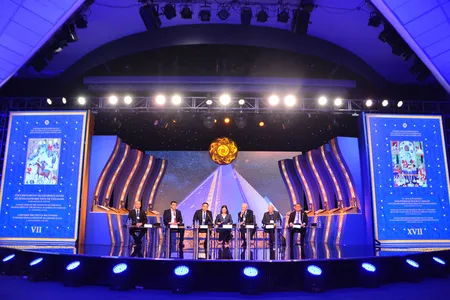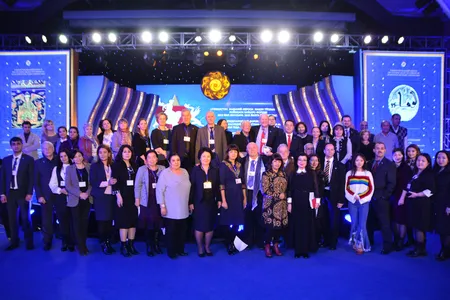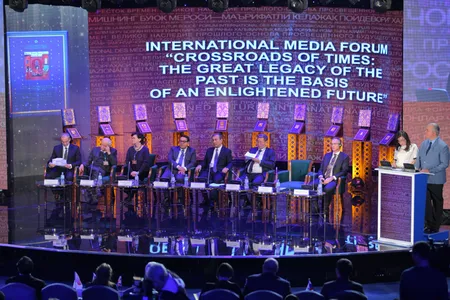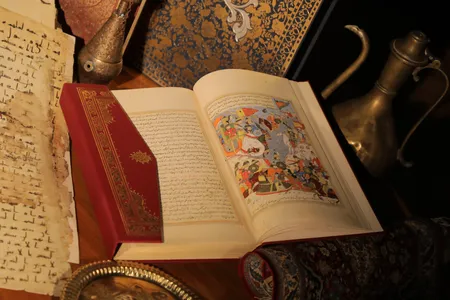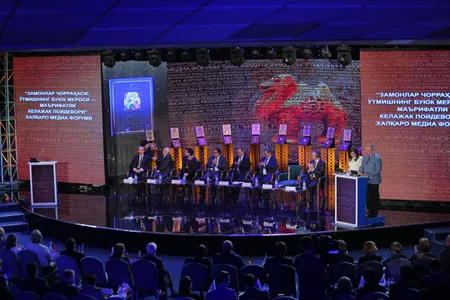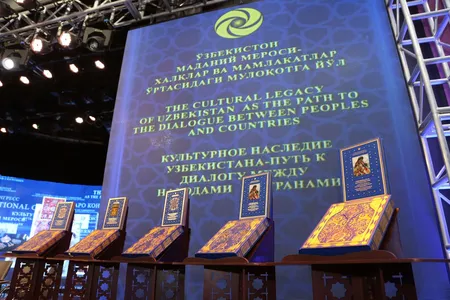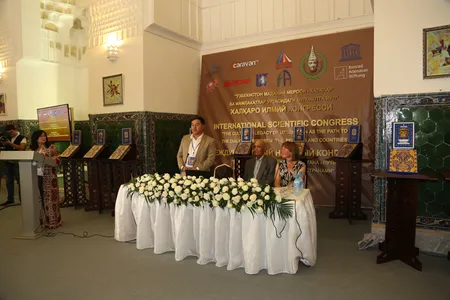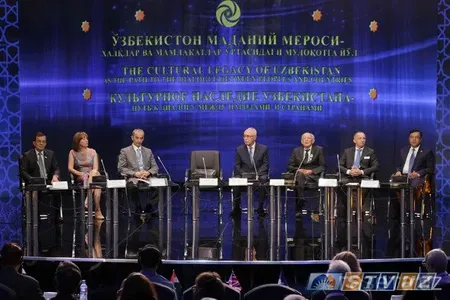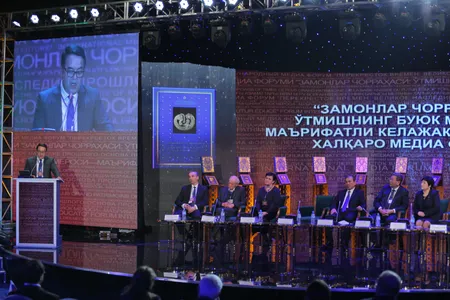The miniature features a diversity of ethnic types, emphasizing the idea of the universality of wisdom. Each sage offers their interpretation of the visions received from the magical cup of Jamshid, which is associated with the elixir of immortality and the revelation of the mysteries of existence.
The absence of text surrounding the image makes it difficult to determine the specific work to which this miniature might have belonged. However, its connection to Firdausi's "Shahnameh" and Nizami's "Iskandarnama" highlights the richness and complexity of Persian literature and mythology.
In the miniature, all those present, gathered around the magical cup, share their impressions and interpretations of what they have seen inside. Each participant, regardless of their knowledge and experience, tries to comprehend the enigmatic object that, according to legend, can unveil the mysteries of existence. The Cup of Jamshid, as a symbol of wisdom and power, draws attention and raises many questions.
The Chinese sage in white robes, the last in this circle of discussion, displays doubt. His posture reflects an internal conflict: he understands the significance of the moment but may not be ready to bear the burden of revealing truths that could prove too heavy for comprehension. This reflects the philosophical approach of Eastern wisdom, where knowledge is often seen as a burden.
The Cup of Jamshid, mentioned in the "Shahnameh," embodies not only a physical object but also the concept of the quest for truth. Legends surrounding it emphasize the connection between royal authority and divine knowledge. Jamshid, as a symbol of the ideal ruler, had access to higher truths and could see what was hidden from ordinary mortals. This raises important questions about the nature of power and responsibility: who has the right to knowledge, and how can it change people's destinies?
Each participant interprets what they see in the cup in their own way: some perceive it as a reflection of their aspirations and desires, while others see it as a warning about potential dangers. In this context, the cup becomes a metaphor for human life—full of mysteries and unexplored paths. Gazing into it, each confronts their own fears and hopes.
Thus, the Cup of Jamshid is not merely a magical artifact; it serves as a catalyst for deep reflections on life, power, and knowledge. The questions it raises remain relevant across centuries, urging people to seek answers to eternal mysteries of existence.
The creation of this miniature in a Transoxian workshop in the late 16th century indicates high-quality execution and the importance of a theme that continues to resonate in the context of seeking knowledge and understanding of the world. It is important to note that the miniature was likely part of a larger album, reflecting the significance of collecting and preserving art during that time.
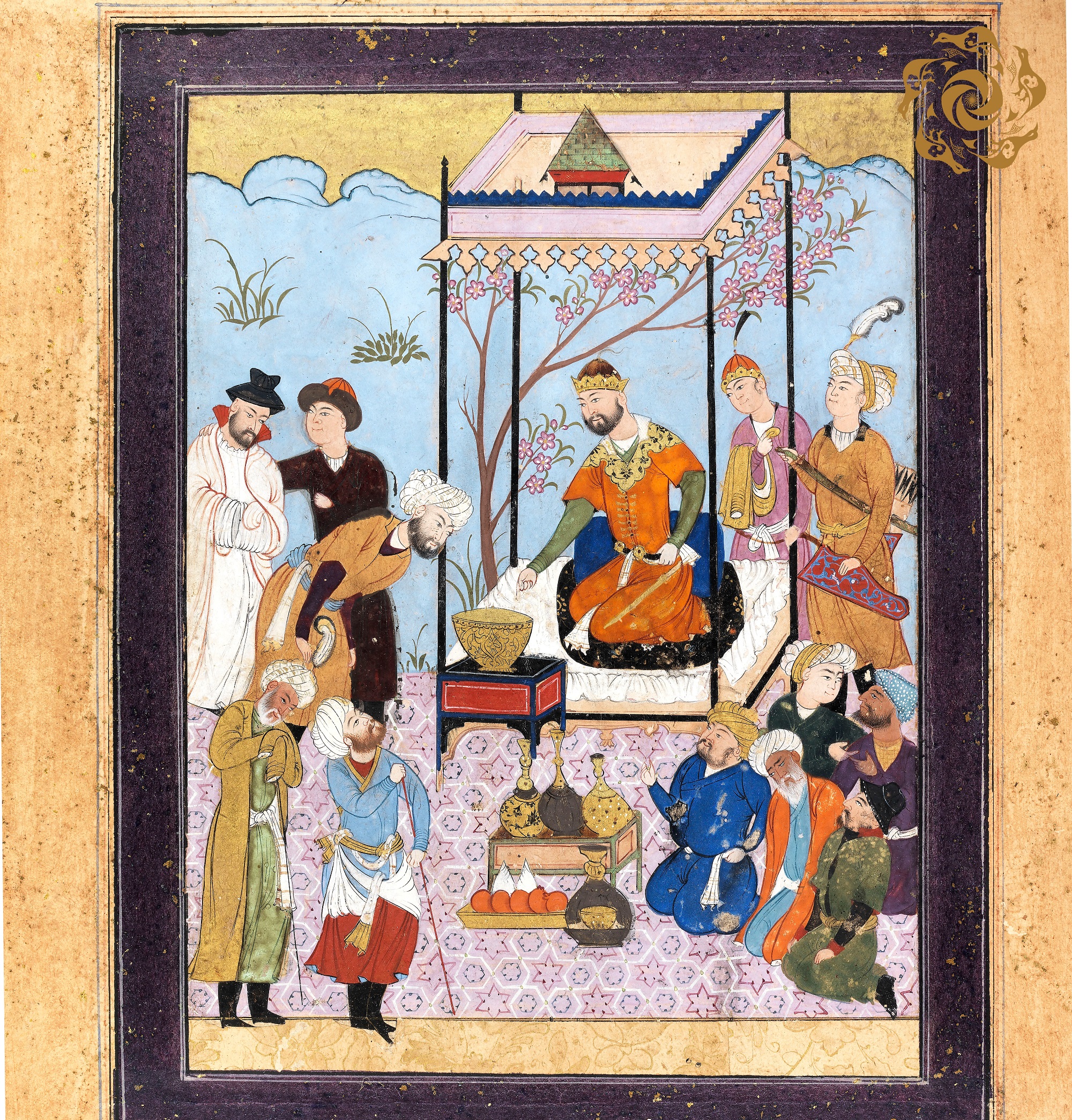
You can read more about this topic in the book-album "The Heritage of Central Asia in the Cambridge University Collection".
The main sponsor of the project is the oilfield services company Eriell-Group.

